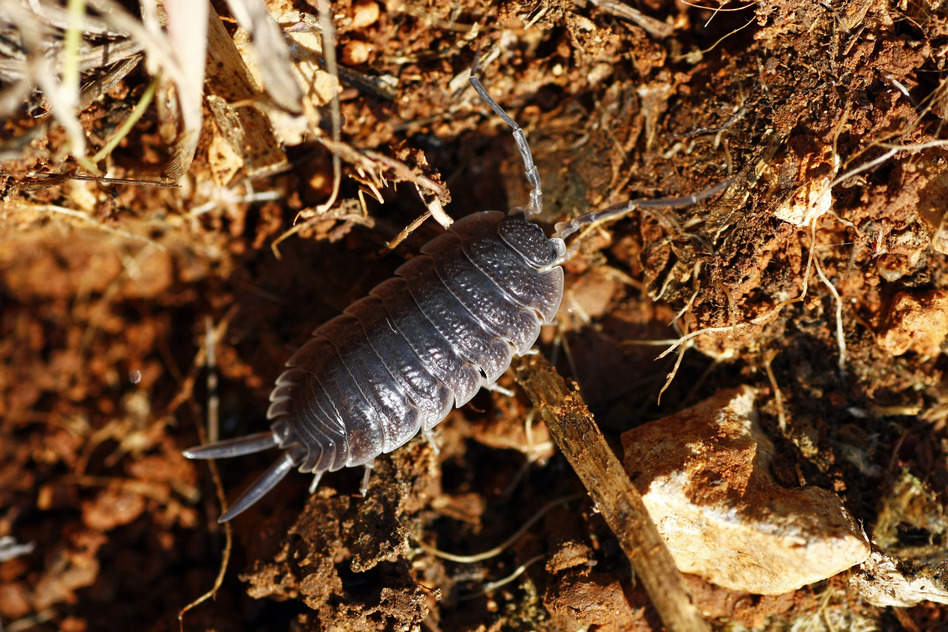

Remediating soil – the natural way

April 9, 2015
Do not underestimate the importance of Oniscideas or, more commonly known as woodlice. There are over 5,000 known species of these isopod crustaceans with rigid, segmented, long exoskeleton and fourteen jointed limbs.
So why are they important? Well turn over a log or brick that has been lying around for a while and underneath you may find a collection of woodlice scurrying about. Also known as “rollie pollies” these grey-coloured creatures can be found in many dark, moist environments feeding on decaying matter. What’s interesting about these creatures is that they are crustaceans and more closely resemble crabs and shrimp, not insects. They are characterised by their ability to roll up into a ball when they feel threatened. Another unique feature is that they have seven pairs of legs. They also act like kangaroos, carrying their eggs around with them in a special pouch called a marsupium, located on their underside. Even stranger, they don’t urinate, instead they exchange gases through gill-like structures.
Woodlice are great for gardening, composting and so remediating soil, as their insides contain a number of microbes that help them feed on dead, organic matter. By releasing mass quantities of woodlice into a mature garden, you can be assured that dead plant matter will be properly broken down and returned to healthy soil. Woodlice literally speed up the process of decomposition. They circulate the soil. Treats for woodlice include fungus and monocotyledonous leaves.
Woodlice play an important role in the cycle of healthy plant life. They return organic matter to the soil so it can be digested further by fungi, protozoans and bacteria. This process produces a natural supply of nitrates, phosphates and other vital nutrients that plants need to thrive.
One very unique quality that woodlice possess is their ability to safely remove heavy metals from soil. For this reason, they are an important tool for cleaning up soil contaminated with pollutants like lead, cadmium and arsenic. In coal spoils and slag heaps, woodlice can come in very handy. They take in heavy metals like lead and cadmium and crystallize these ions in their guts. The heavy metal toxins are then made into spherical deposits in the mid gut. With this special remediating property, woodlice survive where most creatures can’t – in the most contaminated of sites.
The magic of woodlice is that they can help re-establish a healthy soil and prevent toxic metal ions from leaching into the groundwater. This means woodlice are also protecting well water from becoming contaminated while stabilising soils.
If you are interested in more traditional remediation equipment rather than woodlice for your next remediation project, click here.
You might also be interested in...
Van Walt Guidelines for sampling for PFAS in Groundwater
November 13, 2024We need to make clear, that at the time of writing, there are no ISO or EN standards which deal with the sampling of groundwater for PFAS.
Read MoreSpot measurement v. continuous environmental monitoring
August 25, 2023Environmental monitoring has developed considerably over the years. From the time when a consultant went out monthly or quarterly with a dip tape to monitor the groundwater level in a borehole, wind forward...
Read MoreMeasuring Nitrates (NO3, NO3-N) in the field
June 20, 2023The interest in Nitrates is nothing new. One way or another we have been measuring them for half a century.
Read MoreVan Walt Environmental Equipment
A small selection of our environmental equipment